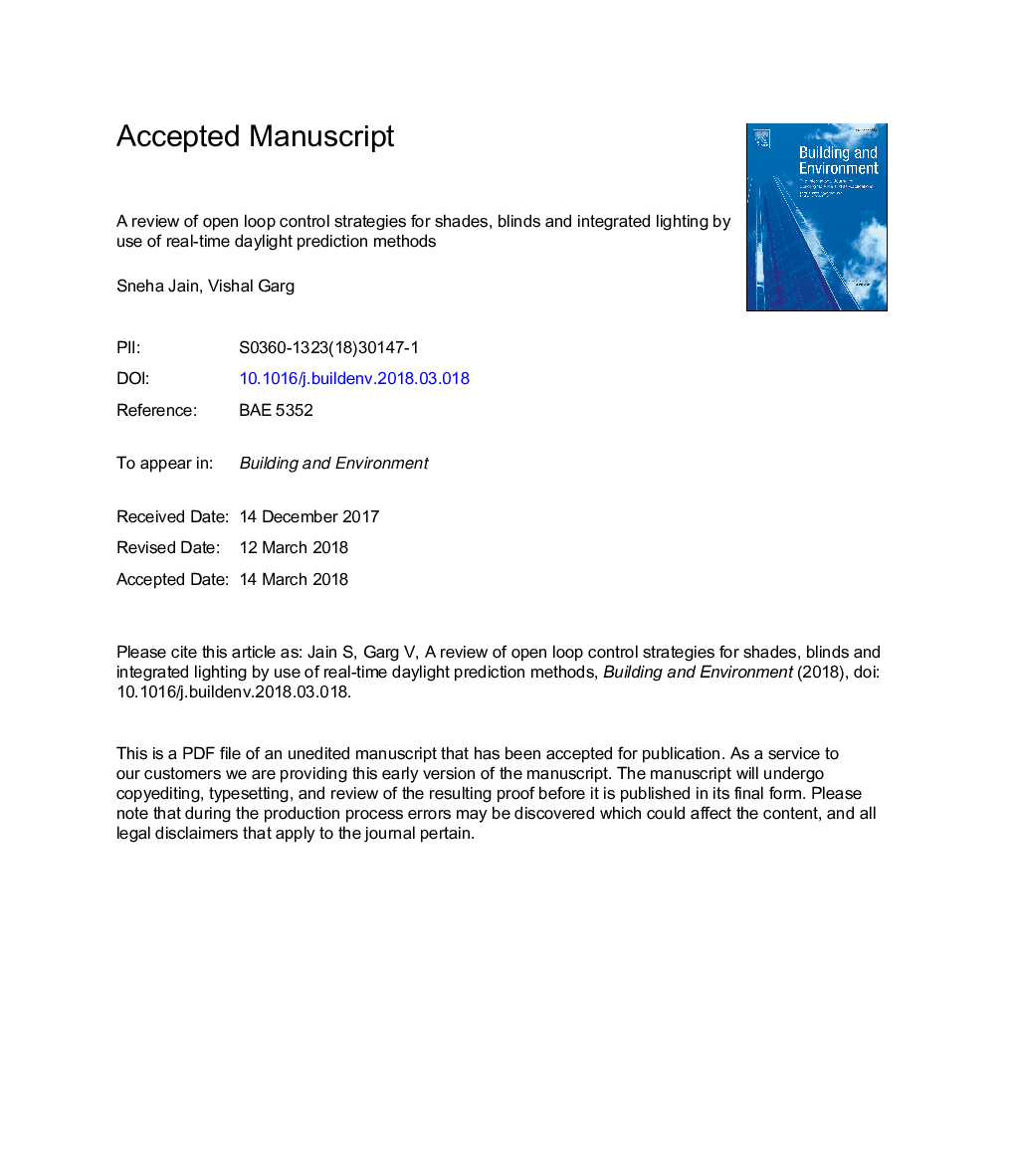| Article ID | Journal | Published Year | Pages | File Type |
|---|---|---|---|---|
| 6697563 | Building and Environment | 2018 | 28 Pages |
Abstract
Automated shading and integrated lighting control systems are being used in buildings for electrical energy savings and improve occupant's comfort. These systems facilitate effective utilization of useful daylight in interior spaces that benefit an occupant's health, well-being, and productivity by preventing glare and overheating while maintaining the adequate illuminance levels. The pragmatic procedure to implement open loop shading and integrated lighting control comprises three parts: (i) a reliable estimation of sky conditions on real-time basis, (ii) determining indoor daylight metrics using outdoor conditions, and (iii) incorporating the metrics in the blind and integrated lighting control techniques. This paper presents a review of experimental studies done on open-loop window shade and integrated lighting control strategies. The aim of this paper is to analyse the performance and feasibility of various daylight prediction methods and their application in controlling blinds and integrated lighting system. The review mainly focuses on simulation assisted open loop control techniques that employ real-time daylight estimation methods. The review identifies the current challenges, recommends areas for improvement, and provides significant scope for future research. The paper concludes that modified and improved open loop system are more competent as an alternative compared to the conventional methods for automated blind and lighting control systems. Advanced open-loop control systems along with calibrated simulations have the capability to reduce post commissioning errors, allow easy monitoring of the system and predict daylight more extensively.
Related Topics
Physical Sciences and Engineering
Energy
Renewable Energy, Sustainability and the Environment
Authors
Sneha Jain, Vishal Garg,
